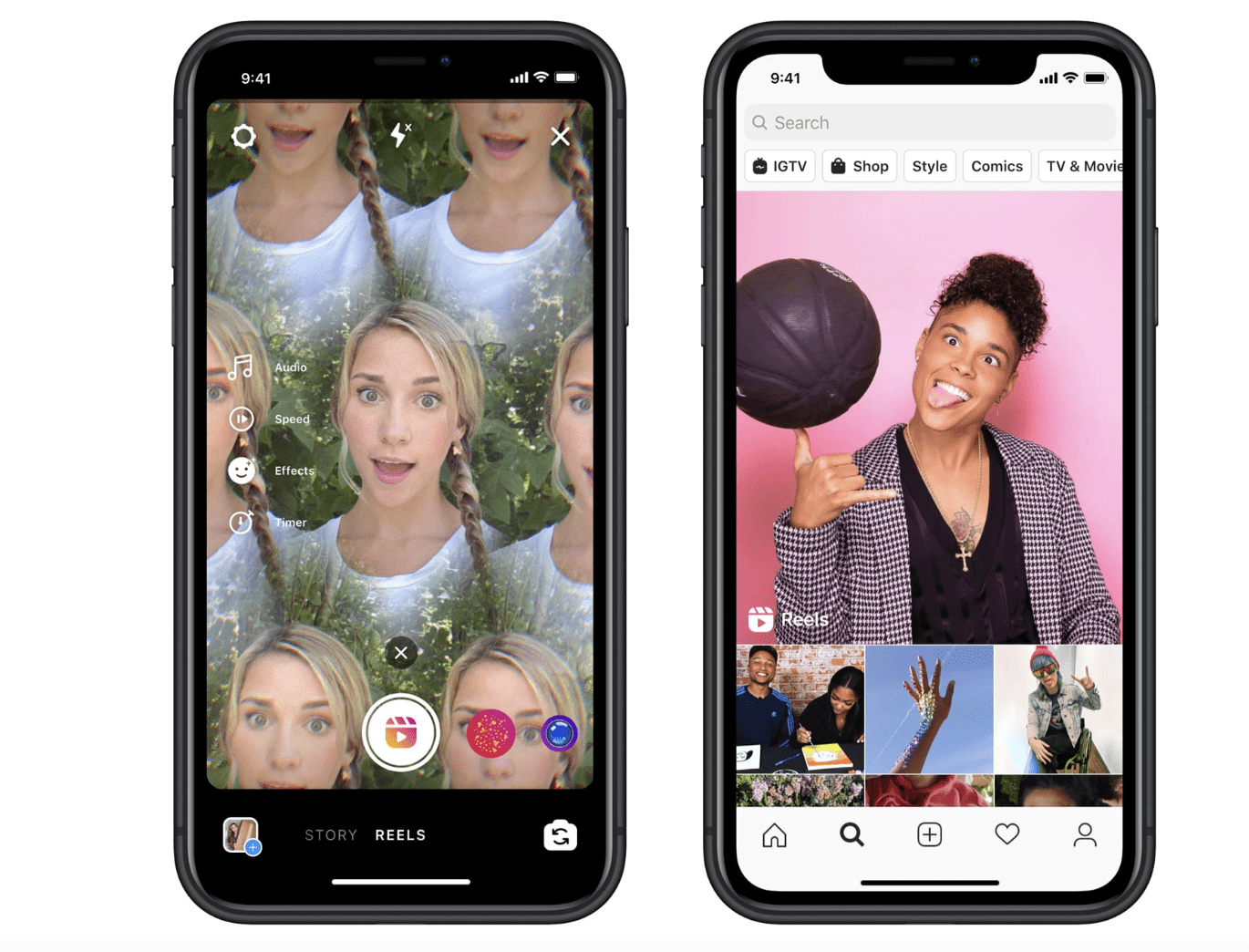In the past few years, video-sharing platforms have become a popular way for content creators to engage with their audience.
Two of the biggest names in this space are Instagram Reels and TikTok. Both platforms offer users the ability to create short videos, often set to music or sound effects, which can then be shared on other social media sites.
But how do they stack up against each other? Let’s take a look at what each platform has to offer. So let’s get started with Instagram Reels Vs TikTok.
What is TikTok?
TikTok is a popular social media tool for uploading videos that have recently swept the Internet.
Since the app first appeared on social media in 2017, over 3 billion individuals have downloaded it, and by the end of this year, it’s anticipated that there will be 5 billion active users!
The Instagram platform has a feature called Reels, but TikTok’s platform is only for short-form video content, which may be up to 10 minutes long.
In order to reach audiences and have an effect, users and companies must be innovative with their video content.
Due to TikTok’s large user base, businesses who utilize it have the chance to drastically raise brand knowledge and exposure. You should think about joining the TikTok trend if the platform is used by your brand’s target market.
TikTok is a platform for users to find new goods; a TikTok survey found that 67% of users were motivated to purchase on the site even if they weren’t initially aiming to do so.
Therefore, TikTok is the best platform for you to promote your brand and reach people.
What Are Instagram Reels?
Vertical videos called Instagram Reels may be seen under the Reels tab on Instagram. Reels are designed similarly to your typical Instagram feed, so users can just browse for an unending supply of continuous video material.
Instagram Reels are brief, lasting only up to 90 seconds. They allow your company the chance to showcase the character of your brand while still marketing your goods or services.
Sharing Reels may help you be seen by Instagram’s algorithm as the social media platform has been moving more and more toward video content in recent years.
Businesses may produce organic video content with Instagram Reels that isn’t always customized with graphics and backgrounds but is nonetheless eye-catching.
Instagram Vs TikTok: A Comparison
1. Paid advertising:
TikTok has both sponsored content and ads. Because bigger businesses are more likely to provide sponsored content, it serves the influencers rather than the businesses’ interests more.
Reels’ audience benefits greatly from the absence of commercials, as opposed to TikTok’s personalized feed-based advertisements.
Influencers still have the option of tagging a post to indicate to the audience that it contains paid material. This is far more user-friendly, and it was undoubtedly made feasible by Instagram’s ability to advertise in other places.
2. Analytics:
Reels hasn’t yet created an algorithm for this sort of video that is as clear or efficient as TikTok’s, and Instagram has always had a tricky and unstable algorithm.
Gen Z and Millenials are drawn to TikTok in part because of how simple it is to go viral and suddenly become a monetized influencer.
Reels do not add anything to Instagram’s standard metrics, but TikTok provides more in-depth data about your viewers.
3. Video editing:
Trends on TikTok often result from certain video effects. Reels offer fewer effects than TikTok and solely the filters found on Instagram Stories.
Sometimes, users who are attempting to stay current with trends need to apply specialized effects. The touch-up option, which softens your face, is one of TikTok’s most useful tools for some people.
The Reels counterpart offers filters with greater touch-up options but isn’t nearly as strong.
This has the drawback that Reels does not differentiate between filters and effects; instead, they are all grouped together, limiting your ability to customize the way your film will turn out.
TikTok sometimes offers the option to save files to your camera roll, which can turn off creatives. However, the videos are preserved with a watermark and a final credit to the user, preserving the material to some degree.
Reels are probably better secured since there is currently no way to save them, which is consistent with Instagram’s initial business model.
Reels have an edge over TikTok since a video’s thumbnail on TikTok must be a frame from the video itself, but Instagram has always been about presentation and pictures.
4. Audio:
The sound collection of TikTok includes more than just popular songs. Its users often produce new sounds that sometimes influence emerging trends and have even helped independent musicians find early success.
In order to increase their views and become one of the success stories granted recognition through a viral TikTok audio, Gen Z often attempts to “jump on” to these fast-paced trends as rapidly as possible.
Without a doubt, Reels offers a broad range of music selections, but its library isn’t as comprehensive as TikTok’s. Reels uses a lot of audio that was previously utilized in TikTok videos.
Although the approach is effective, Reels and its viewers are still dependent on TikTok to provide videos that will rank well in the algorithm.
Instagram is not a site for sharing music. It is established on artists sharing their own work, but TikTok was founded on the basis of utilizing copyrighted music; hence by nature, it has stricter copyright restrictions.
Instagram’s effort to combine two quite dissimilar business models ultimately fails.
Reels are merely Instagram’s approach to keeping up with TikTok and trying to gain back part of their following, but TikTok is more about a generation sharing ideas to generate entertainment and uniting in laughs.
Quick Links:
- Best Instagram Reel Statistics
- TikTok Statistics You Need To Know
- What is The Best Time To Post On Instagram?
- How To Make Money While Using Tiktok?
Conclusion: Instagram Reels Vs TikTok 2025
When deciding between Instagram Reels and TikTok, there are several factors you should consider before committing your time and energy to one platform over another.
Both offer exciting opportunities for content creators who want to share their work with the world, but each has its own unique features that may appeal more strongly depending on a user’s individual needs and preferences.
At the end of the day, it’s important to pick the platform that best suits your goals as a creator so you can maximize your success!








